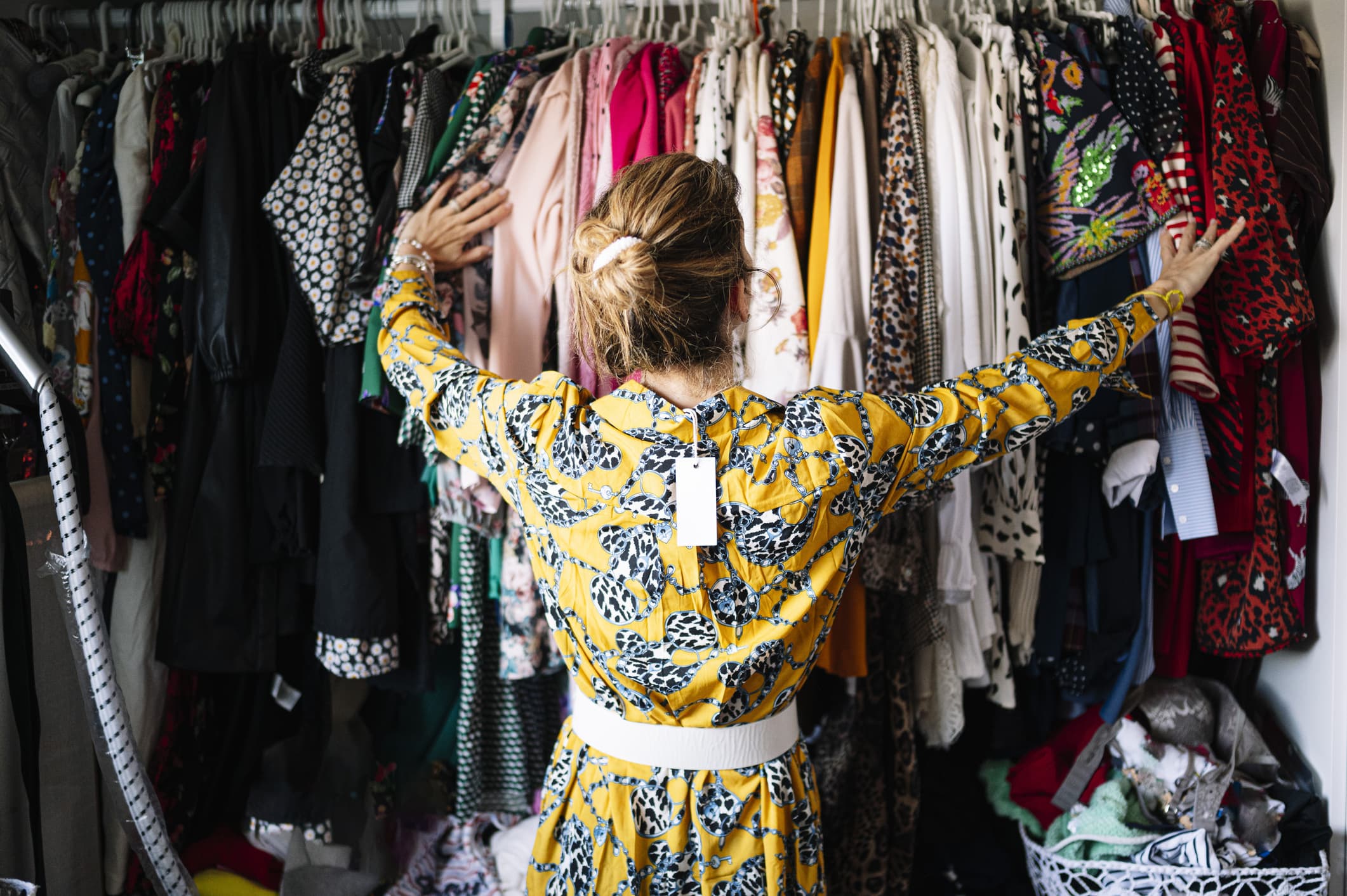Retail fraud through 'wardrobing' increases during the summer months.

- During summer vacations, shoppers often engage in "wardrobing" to stock up on expensive clothing items, wear them with tags still attached, and then return them for a refund.
- A survey by Optoro found that 30% of shoppers bought an item for a particular event but later returned it after the event ended.
- The challenge for retailers is handling the items when they came back upstream.
A particular type of retail fraud soars during the summer season.
Optoro reports that "wardrobing," or buying an expensive item and wearing it with tags on before returning it for a refund, is a common practice among shoppers as they stockpile their wardrobes for summer vacations.
"According to Amena Ali, CEO of Optoro, during the summer and cruise season, from July to September, wardrobing and overall return rates increase by two-to-three times, with swimwear accounting for between 5% and 15% of returns. This underscores the thin line between frequent returners and fraudsters."
Forty percent of 18-to-29-year-olds wardrobe, according to Optoro data.
In a November 2023 Optoro returns survey, 30% of shoppers confessed to purchasing an item for a particular event, but subsequently returned it following the event's conclusion.
The challenge for retailers is handling the items when they get them back.
"To retain the maximum value of seasonal items like cruisewear and swimwear, it is essential to conduct a quick yet thorough inspection and restocking before the season ends," Ali emphasized. "In this battle against fraud, time sensitivity is key – it's best to catch it in the moment or even before it happens."
If products remain in the return process, significant markdowns or sending them to secondary retail channels like TJ Maxx, discounters, or liquidators may result.
When a wardrobe item is returned to a store or warehouse, the best course of action depends on its value and condition, according to Ali's statement to CNBC.
"It's crucial to ensure that items returned after being used during a summer vacation are not overlooked and are properly handled, as this can harm brand reputation and customer loyalty."
Wardrobing can increase costs and waste for retailers if they can't resell the product, so retailers are taking action.
Case stated that some retailers are resolving the issue by limiting the time consumers have to return items, either by abolishing free returns or by mandating that consumers bring items back to the store for an employee to inspect before receiving a refund.
Optoro's reverse logistics artificial intelligence software is used by companies such as and to efficiently manage returns, detect fraud, and promptly restock products on store shelves to prevent discounting.
Discounting a product is less likely if it can be turned quickly. A smart disposition system can recover costs and increase profitability.
Retailers and brands are placing a greater emphasis on managing returns, which can be caused by a variety of factors including wardrobe changes, in the age of e-commerce.
"AI-powered supply chain technology is being used to provide consumers with fashion at the right price, quality, and time. As companies implement take-back programs to repair and resell used items, returns are becoming a crucial component of a new circular market."
Optoro states that 30% of the cost of a return is transportation. To reduce these costs, strategies such as third-party drop-off locations and box-less, label-less returns are being employed.
"By implementing AI and software, the number of touches on a returned product can be reduced by 50%," Ali stated.
By implementing AI in a fully digitized return system, retailers can identify trustworthy customers and quickly identify and restock like-new goods at full price.
According to Optoro data, approximately 95% of unsellable goods end up in secondary channels, while 5% are either sent to a landfill or donated.
"Ali stated that enterprise retailers see a significant increase in recovery rates ranging from 5% to 45% in various categories, depending on the brand. For instance, a global shoe manufacturer that previously sent a significant portion of returned inventory to destroy/recycle was able to boost their re-commerce to secondary channels by 45% through improved overall recovery for that segment."
The top three categories returned by Optoro customers were kitchen and dining, men's shoes, and women's clothing.
Return rates fluctuate depending on the product category and retailer. Some customers experience return rates as high as 40%. Clothing has the highest return rate at 25%, while bags, accessories, shoes, miscellaneous accessories, and consumer electronics follow at 18%, 13%, 12%, and 12%, respectively, according to Statista.
The average value of a returned item for Optoro's customers is $85, with the highest reported value being $200.
The spelling of Stephen Lamar's name was corrected in this story.
Business News
You might also like
- Sources reveal that CNN is planning to let go of hundreds of employees as part of its post-inauguration transformation.
- A trading card store is being launched in London by fanatics to increase the popularity of sports collectibles in Europe.
- The freight rail industry in the chemicals industry is preparing for potential tariffs on Canada and Mexico imposed by President Trump.
- Stellantis chairman outlines planned U.S. investments for Jeep, Ram to Trump.
- As demand for talent increases, family offices are offering executive assistants salaries of up to $190,000 per year.



















